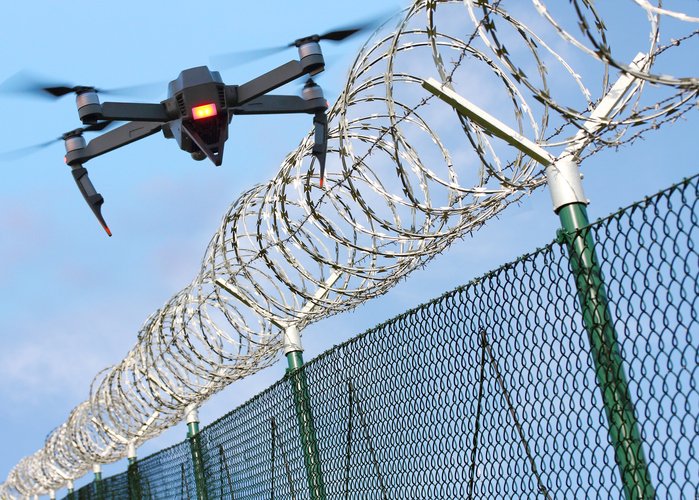
Drone technology has seen rapid advancements over last one decade. Drones were originally built for military purposes. These tremendous growth inducing technologies and rapid advancements in communication technology has helped drones make the break into consumer electronics. Drones, originally built as arms are now used for a wide range of functions including goods delivery (pizza delivery on bikes is not going to continue forever), filming and photography.
Drones being unmanned aircraft have limited human interface during operations which in turn is limited to ground. Drones are software-controlled and with progression in technology will follow programmed flight plans which will function in conjunction with onboard sensors and GPS. The last 10 years or so have witnessed a huge explosion in drone innovation and push towards commercialisation of drone production on a larger scale with manufacturers achieving economies of scale. One electronic device that has changed the face of human interaction is phone, today the drones stand in that league and are bound to change the face of communication, travel, photography and logistics delivery.
Drones are being actively deployed by various police forces in India for security during live operations in places like Kashmir and for crowd control during law-and-order situations and for crowd monitoring and manoeuvring during festivals and processions.
The biggest challenge staring us in the eye is miniaturisation of drones with advancing technology. Smaller drones are swift, difficult to monitor and cheap. With enhancement in payload delivery technology of drones it is easier for rogue elements to misuse them for various terrorist activities. Two recent phenomena where drones have posed challenges in India are:
- Drone-dropping of weapons and explosives from across the border in Punjab and Jammu and Kashmir.
- Photography and filming of vital installations and exposure of architecture and security apparatus of such vital installations.
It is not very difficult to conceive that smaller drones will become common place in the not too distant future. Development in algorithms governing GPS and flight paths will push weaponisation of drones by rogue elements. While drones will have massive positive impact on weather predictions, mining industry and agriculture sector, rogue-drones in the hands of anti-national elements will pose equally greater challenges and threats to security agencies.
The most effective Counter-rogue drone systems follow the Detect-Interdict protocol. We need to invest substantially in Drone research which in turn should lead to better home-grown counter-drone devices. Counter-drone technology involves radio devices, radars, optical and acoustic mechanisms and demands heavy investments in GPS and sensors technology. Apart from this what we require is a holistic procurement policy for counter-drone technology and devices from countries who are at an advanced stage. The most important factor in this is going to be –
How many counter-drone devices will we require?
Should we go for as many counter-drone devices equal to the number of drones in circulation?
No, we don’t need that. What we need are effective counter-drone devices designed to take on rogue drones in a swift manner without causing collateral damage. The potential places where we require such devices on priority are:
- International Border to counter drone-dropping of weapons, explosives and narcotics.
- Metro cities where big events take place on fairly regular intervals.
- Festival or occasion-specific requirements in various cities like Mysore, Hyderabad, Kolkata and Haridwar etc. where large crowds can be targeted through rogue drones.
In near future, Pakistan might start dropping drones along with weapons and narcotics which can be used by terrorists for targeting civilians and security forces. The ‘Drones Rules 2021’ are a positive step in the right direction towards regulation of legally procured drones. The real challenge for security agencies is going to be posed by the illegally-procured drones with payload technology and advanced weapons systems and flight path softwares which will require codified protective measures.
Protective measures would have to be compiled keeping in mind:
- The protective measures that the security agency seeks authority to use for safety of civilians, security personnel or vital installations must be clear on:
a. The technology and equipment that the security agency plans to deploy, including its capabilities and specific technical characteristics.
b. Whether the Government rules and regulations allow the use of such technology and equipment and, if not, a justification for using the technology or equipment chosen.
c. Any applicable policies or procedures relating to use of the protective measures.
2. Whether the use of the protective measures is expected to result in the interception of communications which will otherwise be out of bounds for the implementing agency. In a place like Delhi, protective measures against drones can be misused to compromise communications on many sensitive fronts.
3. The time period during which the protective measures will be used and the proposed area or airspace covered by the concerned security agency.
Keeping the checks and balances mentioned above during framing of protective measures, following conditions would have to be placed on end-users of drones:
Emphasis should be placed on human-centric use of drones which must ensure one drone-one operator mechanism to help tagging of every drone device to one particular owner or user.
Autonomous flying where one drone is incharge of other drones has to be countered on procurement policy formulation stage.
One example of effective Counter-Rogue Drone mechanism has been Tokyo Police’s use of ‘flying nets’ attached to legal drones to capture and neutralise rogue drones. Many countries have gone for geofencing agreements with drone manufacturers to prevent flying of drones near critical and vital installations.
Any future talks with neighbours like Pakistan and Bangladesh might include geofencing agreements on drones between us and them.
The counter-drone technology is evolving slower than the Drones manufacturing technologies and this lag is going to remain there for a long time. Commercial miniaturised drones can be weaponised by rogue elements without much investment and training but on the other hand counter-drone technology requires more investment and specific training to operators.
The emerging threat of rogue drones will require investment in one more factor for an effective counter-rogue drone strategy – Human Intelligence. The real threat are not the drones themselves but the people operating them. Investment in intelligence about designs of rogue elements is going to play an important role in countering rogue drones apart from investing heavily in technologies that will enhance our Detect-Interdict capabilities.






Add comment